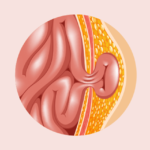Laparoscopic surgeons use modern technologies to perform operations through very small cuts (less than two centimeters). Smaller cuts mean lesser pain and faster healing.
What is Laparoscopy ?
Laparoscopy is derived from a Greek Word, ‘Laparos’ meaning abdomen and ‘Scopy’ meaning to see inside. So indeed it is a means for the surgeon to visualize the internal abdominal organs and advise medical treatment or perform surgery.
Diagnostic Laparoscopy is the most basic of laparoscopic surgeries where the surgeon uses a high-definition camera placed through the umbilicus of the patient under general anesthesia, to visualize organs, and take samples of tissues or fluid for tests. Many times a diagnosis is made with a laparoscopic procedure instead of open surgery. Since very small incisions are put on the abdominal wall of the patient such as 5mm to 15 mm, the procedure has become popularly called Minimal Access Surgery or Minimal Invasive Surgery, or Key hole surgery.
Why is it Laparoscopy better than conventional surgery?
Smaller incisions mean less pain and hence faster recovery. The surgeon can go one step ahead in the treatment like removal of an appendix or gall bladder or repair of an abdominal hernia or removal of cancer, etc. Do remember, that your surgeon is the best judge of which surgery is appropriate for your condition.
How is Laparoscopy performed?
Laparoscopy involves using long instruments called laparoscopic instruments. These instruments are thin and long with a diameter of 4.5 mm and up to 15 mm. Laparoscopy is an acquired skill and a surgeon has to train long to achieve proficiency. Technology has helped him by providing HDTV and today we even have 3D laparoscopy equipment which gives a more realistic image. Advances in technology and engineering have provided the surgeon with mini- laparoscopy which involves more finer and delicate instruments to perform the same surgeries as laparoscopy.
What is Mini-Laparoscopy?
Mini laparoscopy incisions are in the range of 3- 3.5 mm and this has the advantage that stitches are not required to close them. Most of the incisions are closed with a stairstep (a thinner and narrower variety of bandaid-like plaster). Hence the patient can have a bath on his wounds the very next day after surgery. Further smaller incisions mean lesser pain and faster recovery. Laparoscopy and Mini-Laparoscopy are now widely used in surgery and is the gold standard of care in the removal of gall bladder stones. It is also used in appendix surgery to remove the appendix, hernia surgeries, bariatric surgeries, and many gynecological ailments.




